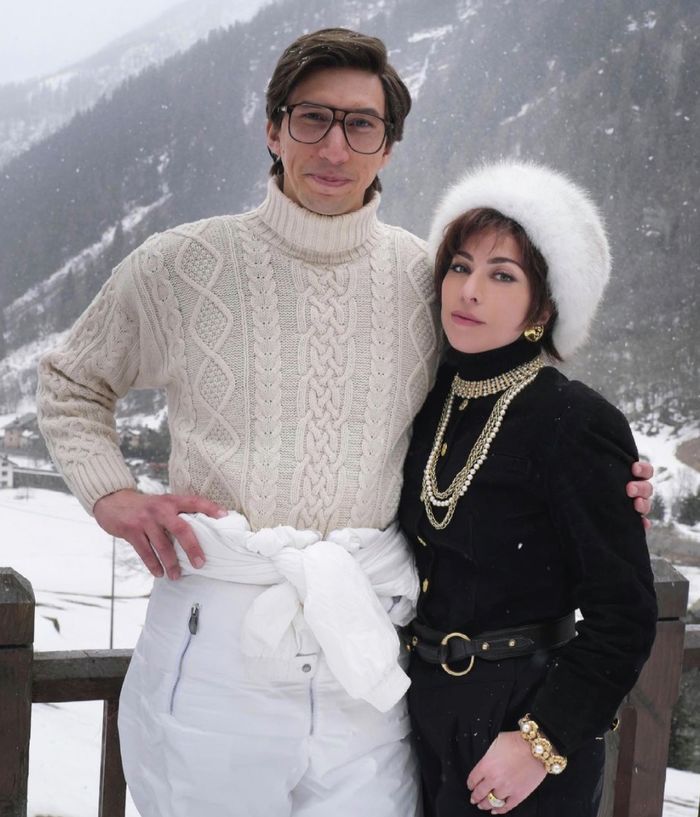Love Jesus, but make it fashion
Fashion Columnist Eliane Bedu begins her series by revealing the surprising compatibility of religion and fashion
Prima facie, fashion and religion don’t always go hand in hand. Style is to be seen, an exterior façade people put up trying to invent themselves. You want to look ‘preppy’, ‘artsy’ or ‘tomboy’ as you share with the world the specifics of your personality — or, rather, how you want it to appear. Faith, on the other hand, is invisible, private, intimate even. It cannot really be exchanged in the way that one switches style inspiration from one day to the next. It is an inner journey that is not to be renewed every season. Even though one could argue that searching for personal style is as much an exploration of the self as a mystical experience, everything pits fashion and religion against each other.
“couturiers are worshipped as if they were gods, their creations defying the laws of physics”
But like it or not, they are intimately linked. As early as the 13th century, religious cloth was regulated by the Catholic Church, imposing a very definite wardrobe on clerics. Forgetting their vow of poverty, here they are wearing a cassock and mozetta, a black biretta, a cope, not to mention the ostentatious jewellery and ornaments. Ecclesiastical fashion is dazzling, using luxurious materials such as velvet, white ermine or silk. Already, the magnificence of the sacred is represented in fashion, the fabrics’ richness and embroidery representing a procession of faith. Religion has always inspired art: Michelangelo’s David, El Greco’s Adoration of the Shepherds, Caravaggio’s Conversion of St Paul. But we tend to forget that fashion, too, is an art. It is a moving sculpture, a living painting, and a mute dance. High fashion, in particular, is designed to be admired. Couturiers are worshipped as if they were gods, their creations defying the laws of physics as they combine volumes, drapes and cuts with movement and lightness. Fashion too gets its creativity from the supreme inspiration: religion.
More than being an art, high fashion is a designer’s diary. The couturier pours their heart into every model and creation, their life’s history, character, and cultural heritage reflected in the work. That is why some designers have used their personal faith and religious background as inspiration. Coco Chanel, Dolce & Gabbana, and many others took religion as a base for their designs. Gabrielle Chanel, who supposedly grew up in a French abbey, created the intertwined ‘C’s that make up the company’s iconic logo after staring at the stained-glass windows of the abbey’s chapel. Similarly, her slimline designs and the recurrence of black and white in her collections were inspired by nuns’ clothing. 100 years after she founded the Maison Chanel, these elements are still being used by her successors, now a part of the brand’s identity.
“designers and the Church work hand in hand, resulting in a visual dialogue between high fashion and the sacred”
Domenico Dolce and Stefano Gabbana, both faithful believers, used their Sicilian origins and religious culture in their designs, combining it with their ‘Dolce Vita’ theme. Drawing inspiration from the Cathedral of Monreale, their Byzantine mosaic dresses recreate the ‘décor’ of Luchino Visconsti’s Leopard. Madonnas, angels and crosses are exhibited in D&G’s “fashion devotion”. But crosses are not exclusive to Dolce & Gabbana — Gianni Versace, who grew up in Reggio Calabria, situated at the toe of Italy, also used Italian religious culture in his designs. Despite the fact that Versace draws its main inspiration from ancient Greece with the Medusa head and labyrinths, Gianni used the cross in his final Fall Couture runway show in 1997, just before his death. The symbol was reused by his sister Donatella in following years, and most famously in Kim Kardashian’s outfit for the Met Gala 2018.
It appears that designers and the Church work hand in hand, resulting in a visual dialogue between high fashion and the sacred. This association opens up infinite horizons for fashion, offering it endless inspirations, while Catholicism tries to popularise and modernise its image. In the instance of the 2018 Met Gala, the theme of which was “Heavenly Bodies: Fashion and the Catholic Imagination”, more than forty pieces of religious clothing were lent by the Vatican for the exhibition, including copes, papal tiaras and pieces from the Sistine Chapel’s ceiling. The Ravasi cardinal, president of the pontifical counsels in charge of cultural affairs, even attended the event, proving that fashion and religion are compatible — much to the chagrin of some believers, who see this alliance as a desecration of the Church.
The decline in attendance at religious ceremonies proves that religion needs to democratise itself, and one way to do this is through fashion. The recurrence of religious representation in high fashion somehow restores Christianity to its former superb, the sacred meeting the profane in an artistic consecration. What better tribute to religion could fashionistas make than wearing it?
 Music / The pipes are calling: the life of a Cambridge Organ Scholar25 April 2025
Music / The pipes are calling: the life of a Cambridge Organ Scholar25 April 2025 News / Candidates clash over Chancellorship25 April 2025
News / Candidates clash over Chancellorship25 April 2025 Interviews / Dr Ally Louks on going viral for all the wrong reasons25 April 2025
Interviews / Dr Ally Louks on going viral for all the wrong reasons25 April 2025 Comment / Cambridge builds up the housing crisis25 April 2025
Comment / Cambridge builds up the housing crisis25 April 2025 Arts / Plays and playing truant: Stephen Fry’s Cambridge25 April 2025
Arts / Plays and playing truant: Stephen Fry’s Cambridge25 April 2025






